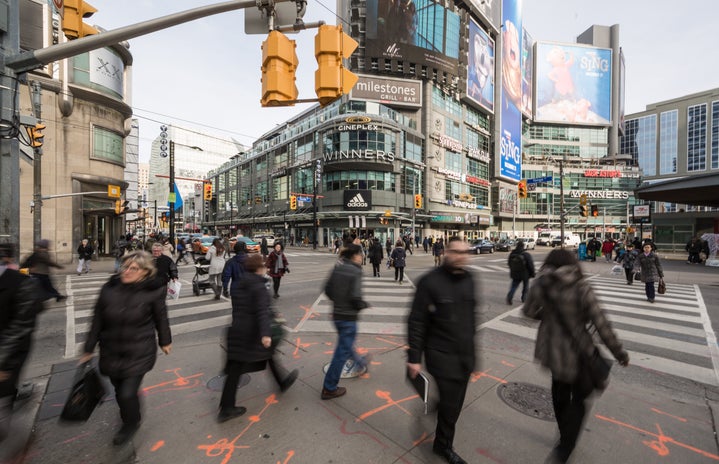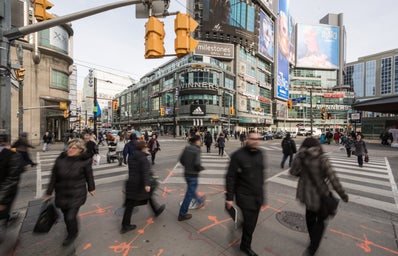People-watching can be really fun. It gives you the chance to reflect on the world around you and witness the emotions of others. But at the same time, people-watching leads you to notice a few additional details. For example, the little things people do to express their emotions. Or the unwritten rules that govern society for no actual reason other than to create standards and expectations. And while extracting these very tendencies from the situation, you are able to notice just how odd creatures humans really are. Or at least, just how odd we Westerners are.
Social norms, also known as conventions, are defined as the things that people in a specific culture or society deem “normal.” Just like how cuisines differ from culture to culture, social norms can also vary. They provide uniformity in the way members of society live. But at the same time, these norms contain little to no reasoning, yet we all blindly follow them.
So here are five social conventions that have haunted my waking hours, trying to figure out where they come from and why we follow them.
1. Clapping
Somewhere along the way, Western society collectively decided that slapping our palms together was a sufficient way to say “good job.” Whether used at the end of a great play, to honour the achievements of a coworker, or even to celebrate the safe landing of a plane (oddly enough), we have all rapidly high-fived ourselves in recognition of others.
Clapping originated in primitive times as a biological and sociological reaction to stimuli. In other words, it was a natural thing humans did without much thought. But now clapping has turned into that thing you do simply because others are doing it too (like clapping at the end of a movie in a cinema).
2. Saying “bless you”
Whenever someone sneezes, it’s almost as if a race begins of who can say “bless you” the quickest. People commonly believe that we say this phrase as sneezes cause our hearts to stop beating. However, it’s actually been proven that our hearts don’t stop when we sneeze, but instead, the pressure of the sneeze briefly disrupts the heart’s rhythm – something natural that isn’t worth worrying about.
So then why do we say “bless you” if it isn’t because our sneezes are causing our hearts to stop? Well, there are several different answers to this question, each more disturbing than the next. Some claim that saying “bless you” after a sneeze began during the Great Plague. Since sneezing was one of the first symptoms of the plague, people began saying “bless you” in acknowledgment that the person would soon die (dark, I know). Some cultures also used it as a superstition, thinking sneezing was a way for our bodies to naturally expel evil spirits. No matter how it started, it doesn’t make all that much sense that we still say it now.
3. Shaking hands
Nothing says “nice to meet you” better than grabbing the moist palm of a stranger’s hand and bobbing it a bit. Shaking hands is more so something of the pre-pandemic days, but nonetheless, it’s a social norm that needs some consideration.
The handshake was created in pre-historic times to demonstrate good faith and trustworthiness to another person. Extending an empty hand was a way of showing someone you didn’t hold any weapons and that you could form a bond with them. Good intentions aside, swapping the bacteria from everything you touched since the last time you washed your hands never sounds like a pleasing idea.
4. Winking
Ah yes, the infamous wink. The subtle act of closing one eye to show affection, a greeting, hidden knowledge, and most commonly, discomfort. No one really knows what it means when someone winks at you. Sometimes you may even think that the person just blinked incorrectly, like one of their eyes just lagged for a quick second. Or you may just think their eye twitched and pretend you didn’t see it at all. And then, by the time you realize they did wink intentionally, you don’t know why (and they probably don’t either).
5. Standing in line
Standing in line is one of those no-brainers that you feel obligated to do whenever the destination you want to go to is also where others want to go, but simply can’t all at once. Lines definitely test the patience of those in them, yet people still decide to join a queue even when they know they’ll be waiting for hours. From amusement parks and grocery stores to airports and concerts, society constantly expects us to stand in an organized formation and follow the person in front of us.
Although it may seem like human nature, standing in line is actually quite new. In 1837, the line made its first historical appearance in Thomas Carlyle’s book “The French Revolution,” when people created a line while waiting for bread outside of a bakery. It’s interesting to think that with over 150 years and all the technology that exists, we are still placing our physical bodies in a formation to get what we want in an organized fashion.


